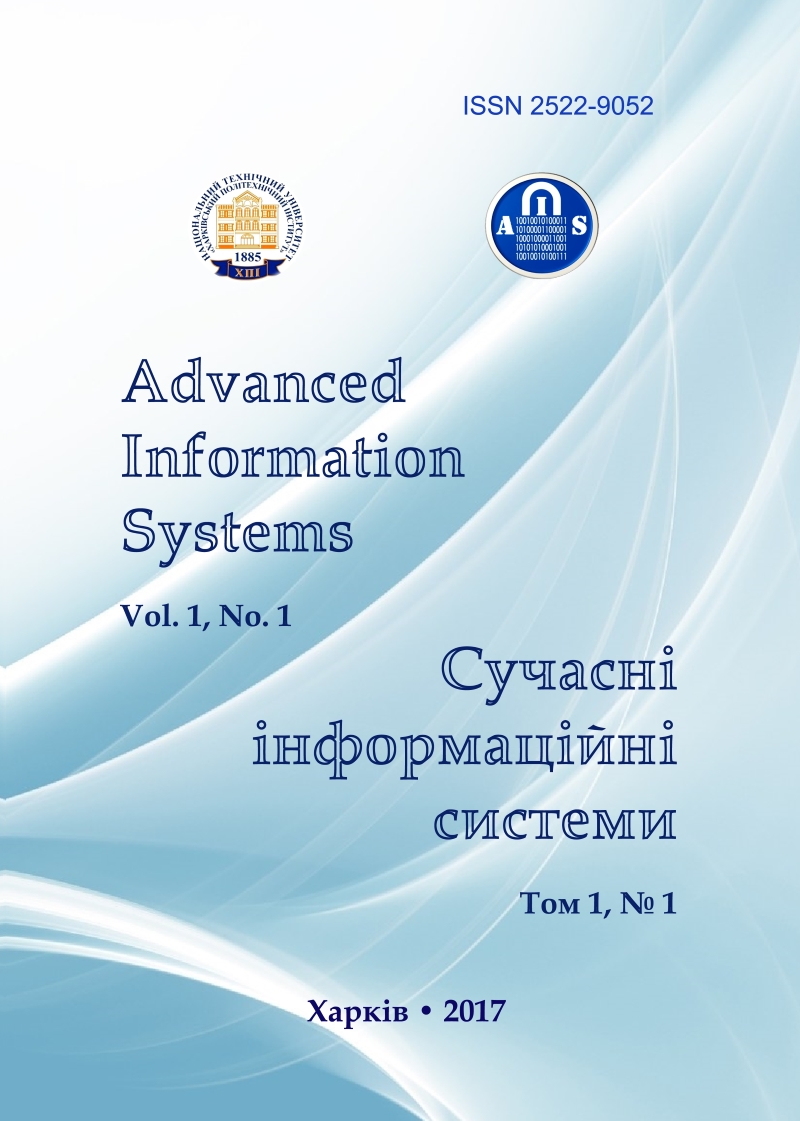Analysis of the current status of intelligent system "Internet of Things" and trends in the development
Main Article Content
Abstract
Article Details
References
Chuankun, Wu. (2010), “A preliminary investigation on the security architecture of the Internetof Things”, Strategy and Policy Decision Research, 25(4), pp. 411–419.
Goldman, Sachs (2014), IoT Primer, The Internet of Things: Making Sense of the Next Mega-Trend, September 3, available at : http://www.goldmansachs.com/our-thinking/outlook/internet-of-things/iot-report.pdf (last accessed March 23, 2017).
International Telecommunication Union. ITU Internet reports 2005: The Internet of Things (2005), 212 p.
Ibrahim, Mashal, Osama, Alsaryrah, Tein-Yaw, Chung, Cheng-Zen, Yang, Wen-Hsing, Kuo and Dharma, P. Agrawal (2015), “Choices for interaction with things on internet and underlying issues”, Ad Hoc Networks, 28, pp. 68–90.
Jeyanthi ang N.,N.Ch.S.N. Iyengar. (2013), “Escape-on-sight: An efficient and scalable mechanism for escaping DDoS attacks in cloud computing environment”, Cybernetics and Information Technologies, 13(1), pp. 46–60.
Kang, Kai, Pang, Zhibo and Wang Cong (2013), “Security and privacy mechanism for health Internet of Things”, The Journal of China Universities of Posts and Telecommunications, 20 (Suppl. 2), pp. 64–68.
Kim Thuat Nguyen, Maryline Laurent and Nouha Oualha (2015), “Survey on secure communication protocols for the Internet of Things”, Ad Hoc Networks, 32, pp. 17–31.
Qazi Mamoon Ashraf ang Mohamed Hadi Habaebi (2015), “Autonomic schemes for threat mitigation in Internet of Things”, Journal of Network and Computer Applications, 49, pp. 112–127.
Jia, X.L., Feng, Q.Y. and Ma, C.Z. (2010) “An efficient anti-collision protocol for RFID tag identification”, IEEE Communications Letters, vol. 14, no. 11, pp.1014–1016.
Finkenzeller K. (2010), RFID Handbook: Fundamentals and Applications in Contactless Smart Cards, Radio Frequency Identification and Near-Field Communication, New York: Wiley. – 478 p.
Culler D {2003), “10 Emerging Technologies That Will Change the World”, Technology Review, pp. 33–49.
Lu, Y.X., Chen, T.B., Meng, Y. (2011), “Evalution guideling system and intelligent evaluation process on the Internet of Things,” American Journal of Engineering and Technology Research, vol. 11, no.9, pp.537-541.
Bang O., Choi J.H., Lee D. and Lee H. (2009), Efficient Novel Anti-collision Protocols for Passive RFID Tags, Auto-ID Labs White Paper WP-HARDWARE-050, MIT, 29 p.
